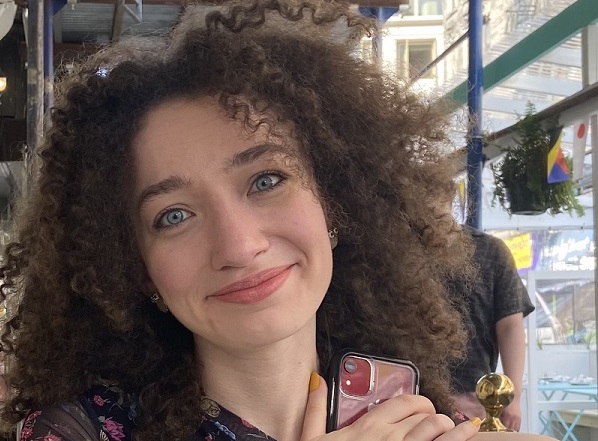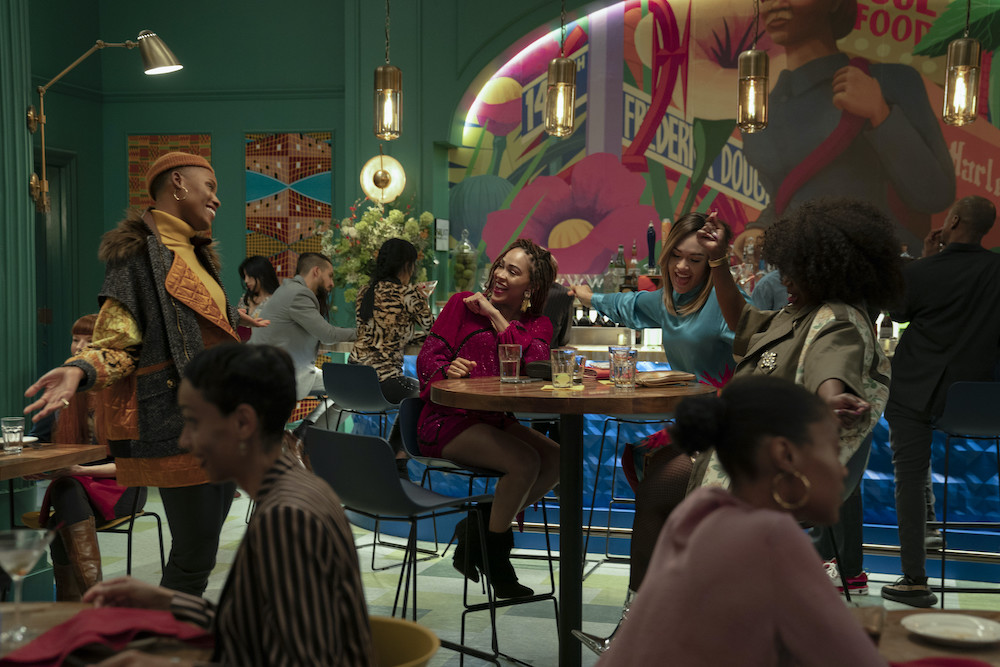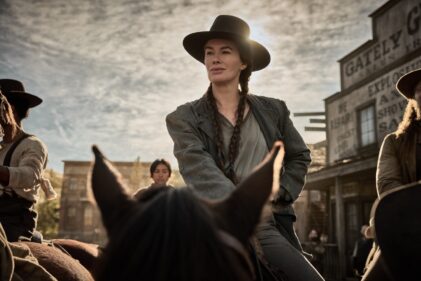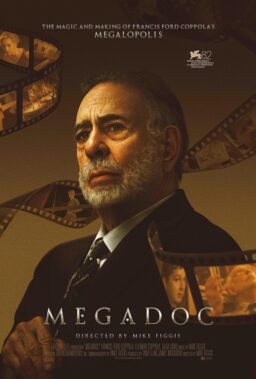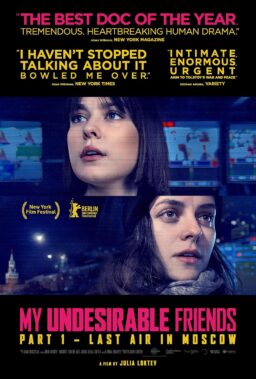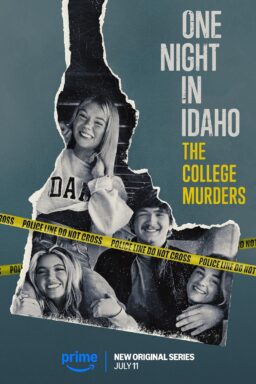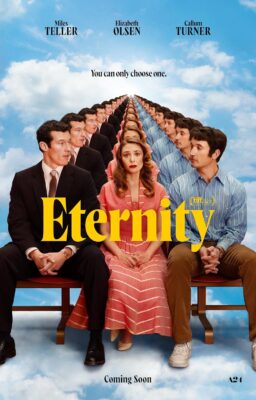Centering four stylish and ambitious thirty-something best friends, the new Amazon series “Harlem” feels like one of several recent and upcoming releases that seem to be aiming to fill a “Sex and the City” type void, from “The Sex Lives of College Girls” to the actual “Sex and the City” revival “And Just Like That.” And considering the overwhelming whiteness of the most prominent titles within the wider “New York City glamour” genre, the all-Black cast and uptown focus of “Harlem” delivers a fresh take on a familiar formula. You know, the one where a group of “relatable” friends in New York City work low-paying jobs, but who also somehow have bottomless closets of impeccably styled designer clothes and live in the most mind-bogglingly gorgeous apartments you have ever seen. Do you have to leave reality at the door for this one? Yes. Is the eye candy worth it? Also yes. This is not a show with repeat outfits, and one character’s apartment has stained-glass sliding doors that expanded my understanding of just how fabulous sliding doors could be.
The central foursome here are Camille (Meagan Good), an adjunct anthropology professor at Columbia University; Tye (Jerrie Johnson) a rising star in the tech world, founder and CEO of Q, a dating app exclusively for queer people of color; Quinn (Grace Byers), a boutique owner and fashion designer still dependent on her wealthy parents to stay afloat; and Angie (Shoniqua Shandai), a talented but chronically unemployed singer and actress living rent-free on Quinn’s couch. Harlem is a main character as much as the central quartet. It might be the most glamorous possible view of Harlem, but it does feel refreshingly and authentically specific to Harlem nonetheless—like it was made by people who know it well, or at least took the time and effort to consult with others who do. Yes, there are other pleasant outliers out there like the EPIX series “Godfather of Harlem,” but these are still more the exception than the general rule. For instance, a film like “Passing,” for all its strengths, makes Harlem feel like the Upper Upper West Side.
The specificity in place and community on display in “Harlem” is a major asset that sidesteps a common issue with a lot of new series that take more of a rainbow coalition type-approach to diverse representation. (You know, the box-of-crayons style deal where you only get one of each.) But this approach does not actually lend itself well to culturally specific discussions and storylines, considering relationships or even just dialogue ultimately requires at least two participants. You inevitably end up with a lot of conversations where a character gets stuck explaining their perspectives to an outsider, a setup that does not naturally make for especially good comedy or drama, especially when repeated ad nauseum.
In showcasing an entirely Black principal cast, “Harlem” is able to explore the diversity and complicated dynamics within Black communities in ways that are dramatically compelling and also often very funny. The particular struggles of modern dating while Black, specifically as a Black woman, are explored with a refreshing degree of nuance, from the dearth of educated men of color in the dating pool to the judgements that come from within the Black community for dating a white person—a criticism leveled much more frequently and intensely against Black women dating outside the race than Black men.
Showrunner Tracy Oliver and director Malcolm D. Lee, who helms the first two episodes, proved to be a winning pair back in 2017 with the “Girls Trip,” a film that laughed in the face of every tired assumption about the lack of box office viability for comedies lead by women of color (not to mention an R-rated one), to become the top-grossing comedy of the year. Teaming up again for “Harlem,” there’s a significant “if it ain’t broke, don’t fix it” element to proceedings. The show brings the same winning combination of Black female friendship and bawdy sex comedy that made “Girls Trip” such a hit to the table, but also features a much more prominent serious side, earnestly engaging in dialogue about significant topics like gentrification, privilege and intergenerational wealth, and medical racism.
The leads all feel perfectly cast, and there are some real stand outs among the supporting players as well, from Goldberg’s commanding presence as Dr. Pruitt, to Jasmine Guy as Patricia. She is Quinn’s philanthropist powerhouse of a mother who writes the checks to keep Quinn’s boutique afloat but also lets her daughter know exactly how she feels about the situation both loudly and often. (“I’m off to the botox doc, I hate when my disappointment is visible,” is her version of “goodbye.”)

Camille serves as the Carrie Bradshaw of the show, if you will; while the screen-time is generally split relatively evenly between the four leads, she always gets the first word and quite often the last, her anthropology lectures utilized in voice over as a framing device in a very Carrie-like fashion. Gunning for a tenured position, Camille has been assured by her mentor and the anthropology department chair at Columbia, Dr. Goodman (Andrea Martin), that she’s a shoo-in for an upcoming position. However, after Dr. Goodman gets ousted in a scandal that is, in true academic style, one part actual gaffe to four parts virtue signaling gone mad, her replacement Dr. Elise Pruitt (Whoopi Goldberg) proves to have a very different vision for the department. Camille and Dr. Pruitt get off on the wrong foot, but it soon becomes clear that their incompatibilities also run much deeper. While the series empathizes with Camille, it also sees validity in Dr. Pruitt’s arguments, reflective of a compellingly nuanced handling of various issues throughout the series. With the exception of Quinn’s hilariously terrible dates and one genuinely insufferable white actress Angie is forced to deal with at one point, basically every conflict here has two sides with valid points to make—a commendably complex approach to drama, especially for a comedy.
The MVPs of “Harlem” are ultimately the writers. Oliver really brought together an all-star group of rising Black talent for the room on this one, including Njeri Brown (“Black-ish,” “Dear White People”), Aeryn Michelle Williams (“Umbrella Academy”), and Azie Dungey (“Unbreakable Kimmy Schmidt,” “Sweetbitter”). Especially for a first season, the characters here are remarkably well-realized, with the obstacles and conflicts that arise over the course of the season feeling consistently organic and driven by the characters themselves.
“Harlem” hits a sweet spot of creating flawed but empathetic characters—the core of their struggles are deeply relatable, but they are also entertainingly petty and imperfect. Outraged to see an old hangout be replaced by an aggressively bougie bistro, for instance, the foursome immediately say there should be a protest; then, upon discovering there is an actual protest in the works, all manage to come up with excuses for why they cannot actually go to said protest in about 30 seconds flat.
While some of the storylines over the course of the season are more compelling than others, there’s an unusual but welcome lack of any that fully do not work—and those that work best are truly something special. A season-long storyline involving a Broadway musical adaptation of “Get Out,” for instance, is absolutely delightful, and maintains that hard-to-strike balance of being both utterly ridiculous and entirely believable. And yes, there are musical numbers featured, particularly an ensemble number about the Sunken Place which features a full-grown man in a teacup costume and such inspired lyrics as “Sink into the couch, sink into the floor / You’re trapped—which is a metaphor.”
Overall, it takes a few episodes for “Harlem” to hit its stride, really coming into its own by the third episode, “Rainbow Sprinkles,” a particularly excellent mixture of painfully accurate commentary on the woes of dating as a Black woman in our times, fun plot twists, and laugh-out-loud moments. There are 10 episodes in the season in total, and it really feels a shame there were not 12 or 15. Not only because it is a good show, with delightfully messy characters one could easily spend more time with, but also because it unfortunately over-extends itself in the back half, the solid pacing of the middle episodes turning into the narrative equivalent of a sprint by the final few installments. There is so much plot crammed into the last four episodes that the comedy suffers because there’s simply no room left. Several multi-episode arcs feel similarly abandoned near the end, with Quinn and Tye’s arcs ending on rather abrupt notes in the season finale. While it’s not without flaws, “Harlem” has great characters and a surplus of ideas—and with any luck, there will hopefully be a season two in which to explore them further.
All ten episodes screened for review. “Harlem” premieres today on Amazon Prime.
